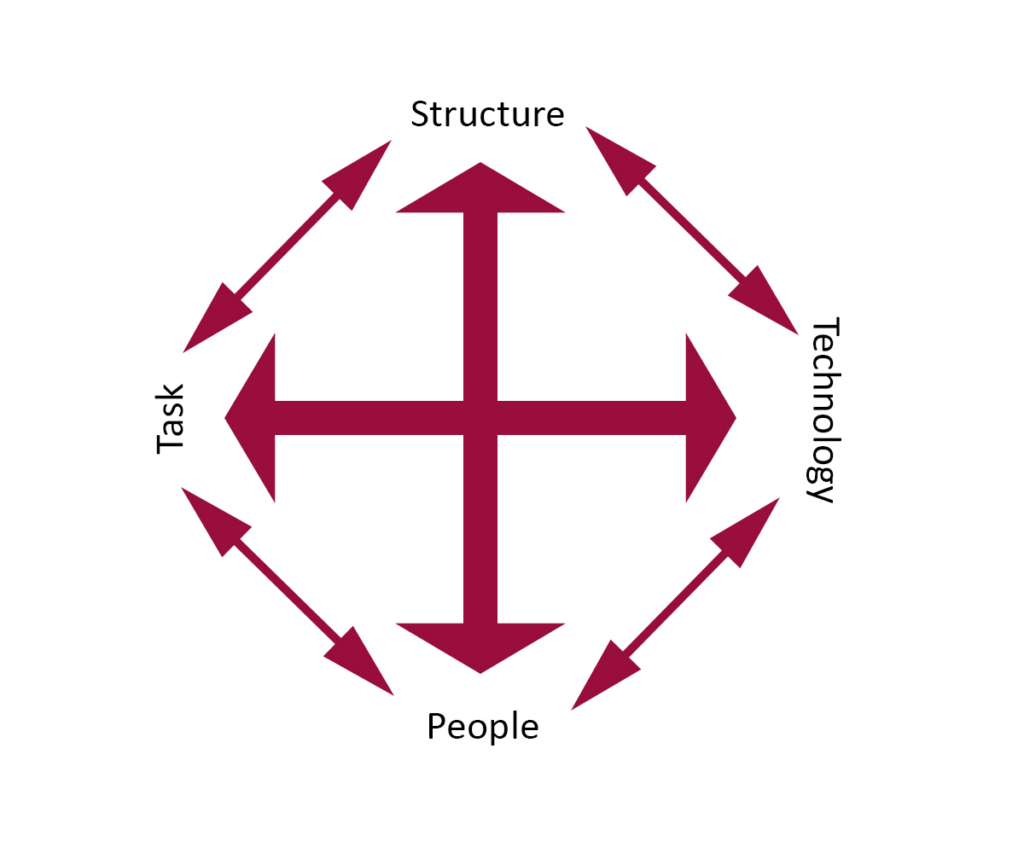12 Apr Leavitt’s Diamond: The Factors Involved in Change
When preparing an organisation for a change initiative there are many mistakes which are often made. Change initiatives often fail due to a lack of preparation, and hence never had a chance of succeeding. One common mistake is to treat the initiative in isolation from the rest of the organisation. It is almost impossible to implement a change strategy without it having an effect on other processes, departments, or individuals, whether they are intentional or not. Therefore, being aware of the effects the change will have on the organisation as a whole, and planning accordingly, is crucial for the success of any change strategy.
Harold Leavitt developed Leavitt’s Diamond, also known as Leavitt’s System Model, in 1965 as a mechanism for analysing the organisation wide effects a change strategy will have. The author outlined 4 independent components of every organisation; tasks, people, structure and technology. He argued that to have a successful ‘integrated change’, it is crucial to understand the connection between each component.
In order to use the model effectively, you must first define exactly what each component does within your organisation. Once this has been done, the second stage is to analyse how the change will affect these processes. We have set out an example below, where a fast food restaurant is changing from face-to-face order to a digital ordering system.
Tasks
The key tasks of the restaurant are to take orders, cook the food and then serve it to customers. As well as secondary tasks such as cleaning, customer service and management. Clearly this change will affect how orders are taken, however it may also affect the way the food is cooked, as chefs now receive the order online, and how it is served as table numbers are now automatically sent online, rather than being told face-to-face.
People
The 3 key roles in the restaurant are taking orders, cooking and serving the food. As stated above all three of the above roles will be affected by the change and training may even be necessary for all individuals to adapt to the change successfully. In particular, the individuals taking order will no longer be needed.
Structure
As the individuals taking orders are no longer needed a restructuring of the workforce will take place. This will result in either a lay-off of workers, or transferring them into new roles. If the second option is taken training may be required.
Technology
This strategy is clearly heavily focused on technology. The technology will need to be developed so that it is efficient enough to make the order process faster than before.
This example has shown that what may be seen as a simple technological upgrade in one area of the business will clearly have large effects throughout the organisation. For the change to be successful all the factors stated above will have to be evaluated and addressed.
Leavitt, Harold J. (1972). Managerial Psychology. Chicago: University of Chicago Press, 1972. Print.


